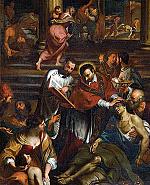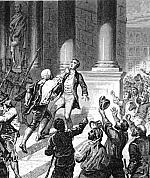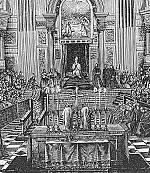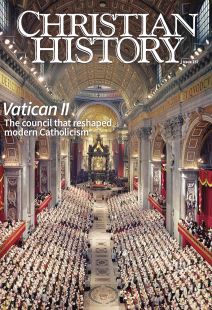Editor's note, Vatican II

Why does the sixtieth anniversary of the Second Vatican Council matter for the entire Christian church?
Growing up and living in an evangelical context—that is, one that was never too keen on anything that whiffed of Rome—I would have had a hard time answering that question with any real conviction before this issue.
For starters I really only ever experienced Catholicism through my grandmother, Maryann Gibbons, and the way she expressed her faith felt alien to me. I still remember the strangeness of seeing icons and crucifixes in every room of her home and attending her Mass, hearing unfamiliar prayers and responses in unfamiliar tonal chants, and trying not to touch the holy water in the basin by the door.
Yet in other ways, we shared more in common than I knew. Grandmom was committed to evangelism (she enthusiastically took her children to see The Cross and the Switchblade when it first aired in theaters in 1970), to the work of the Holy Spirit (she participated in charismatic conferences, where Catholics gathered with Protestants of all persuasions), and to a vision of the world that rejected secularization—just like us Protestants.
These commonalities, or at least my experience of them, are in large part due to the Second Vatican Council.
From Trent to Vatican II
So what is Vatican II? In this issue of Christian History, we’ll explore this historic council of the Roman Catholic Church and how it came to be. Starting with the Council of Trent and the Catholic response to the Protestant Reformation, we’ll see how multiple factors—Trent’s consequences, the tenuous relationship between papal authority and state power, and movements such as the Enlightenment—created a desperate need for another council.
All this led to the First Vatican Council in 1869, which sought to clarify Catholic beliefs and defend the church’s faith by defining one of its most contentious dogmas—papal infallibility. But even this wasn’t the end of the dialogue. Crises outside the church and controversies within would precipitate the next council, nearly one hundred years later.
Addressing the modern world
Still, when Vatican II did convene, it was an unexpected and unprecedented move. But the modern world had brought with it modern problems, raising questions that required thoughtful reflection and answers. What, for instance, should liturgy look like in the twentieth-century church? How should clergy understand their authority in their locales and in relationship to the authority of the pope? What roles do laypeople play? How does the church respond to racism, worldwide wars, and other evils? How should Catholics relate to Protestant and Orthodox believers? How about those of other faiths?
At Vatican II bishops gathered to debate responses to these issues and more. Some debates were more divisive than others. But the council clarified doctrines and answered hard questions, leading to opportunities for unity within the church, dialogue across denominational aisles, and a renewed sense of mission and purpose for her people.
Wherever Catholics stand—and however Protestants may interpret the council’s conclusions—undoubtedly Vatican II transformed everyone’s experience of Catholicism. And 60 years later, that’s still true.
It only struck me recently, as Grandmom sat beside me at my son’s soccer game, that she had lived that transformation. Which I, of course, asked her about.
As we sat and talked, I was thankful. Thankful to hear history relived, thankful for shared roots (however the branches splay out), and thankful for the relationship we have. This open dialogue was part of Vatican II’s legacy.
So why does Vatican II matter? As you read on, I hope you stay curious enough to find out. CH
By Kaylena Radcliff
[Christian History originally published this article in Christian History Issue #157 in 2025]
Kaylena Radcliff, managing editorNext articles
Piety and power
Politics, reforms, and lay movements shaped Catholicism’s modern era
Edwin Woodruff TaitSupport us
Christian History Institute (CHI) is a non-profit Pennsylvania corporation founded in 1982. Your donations support the continuation of this ministry
Donate







